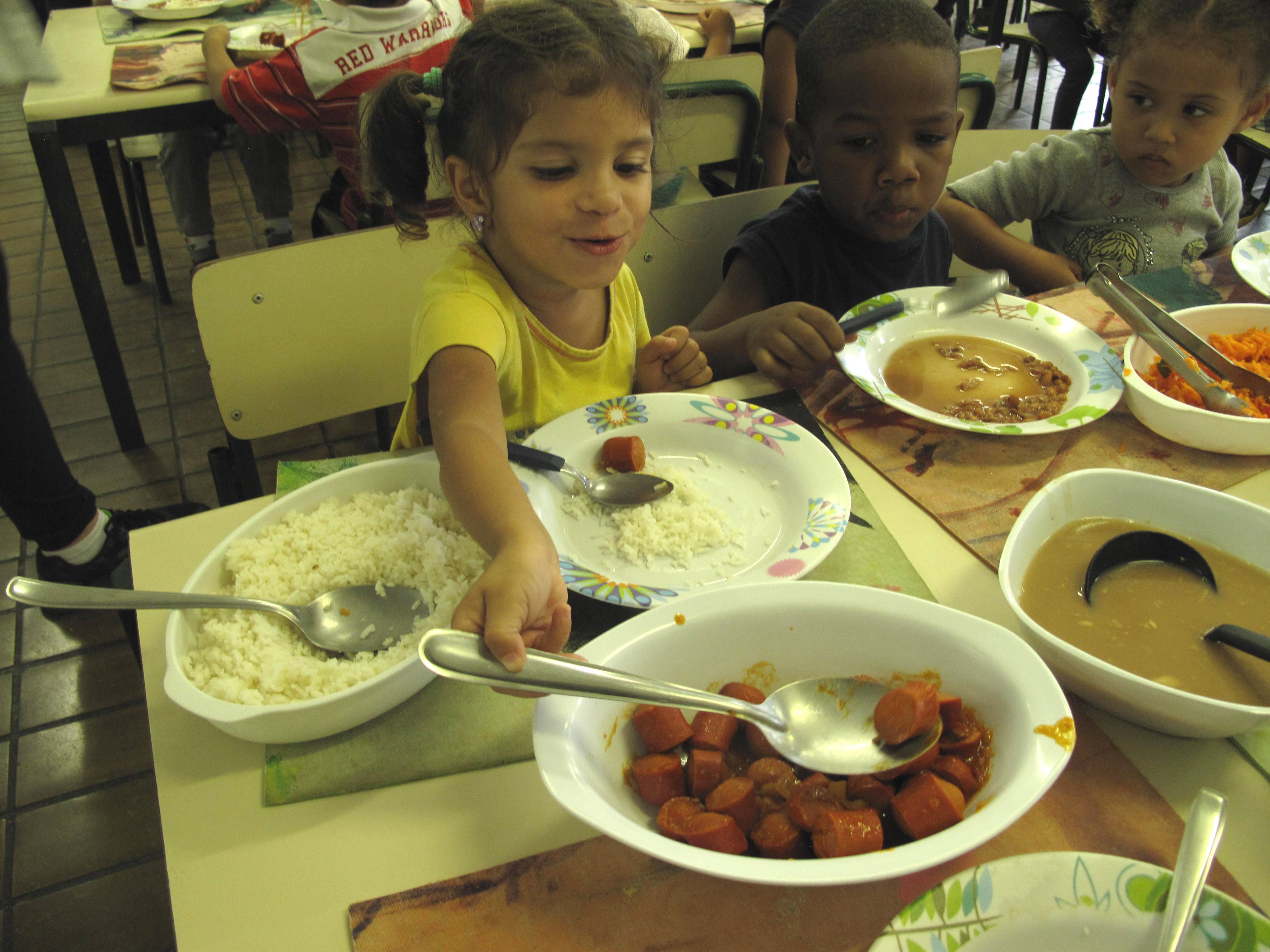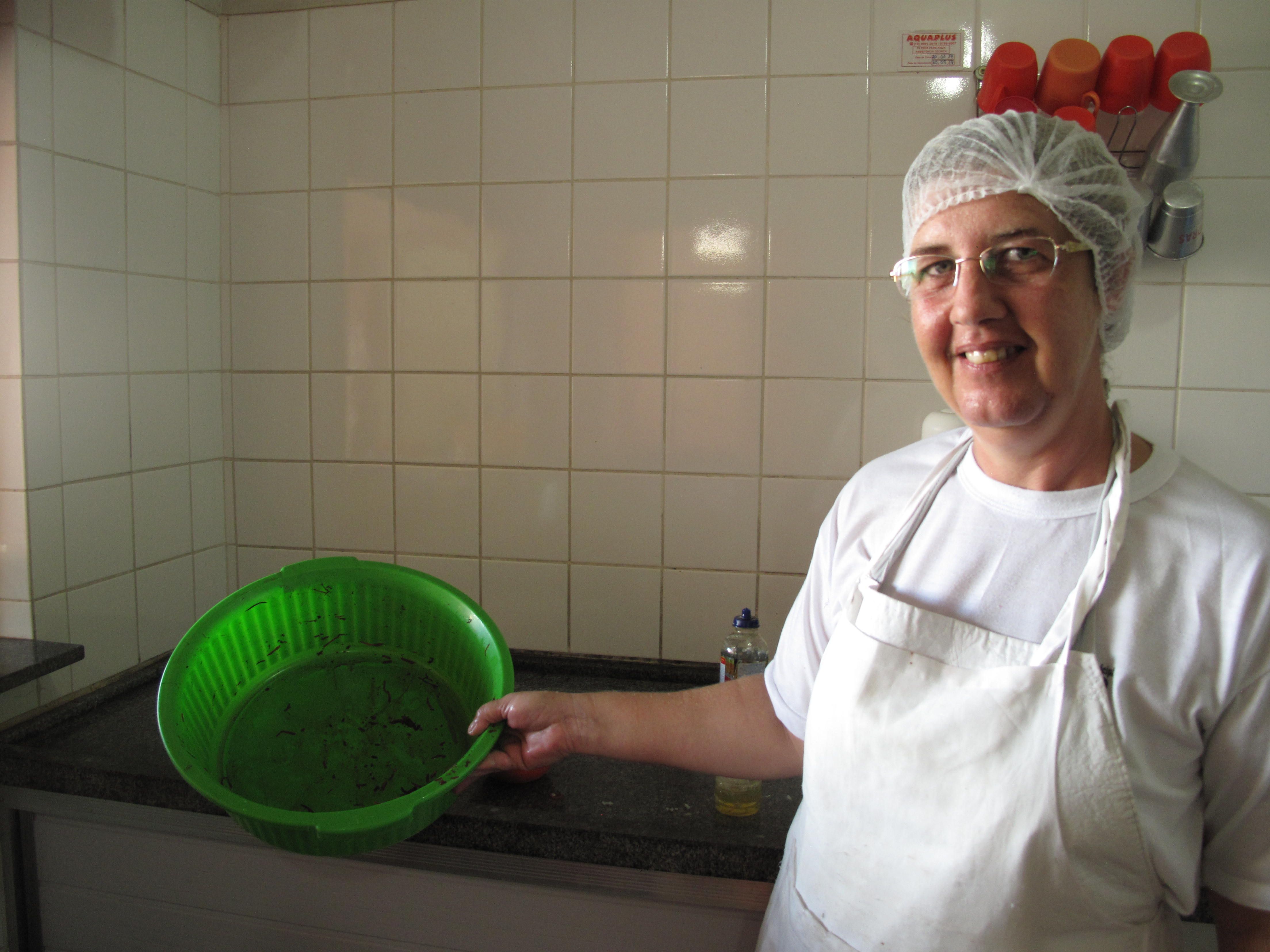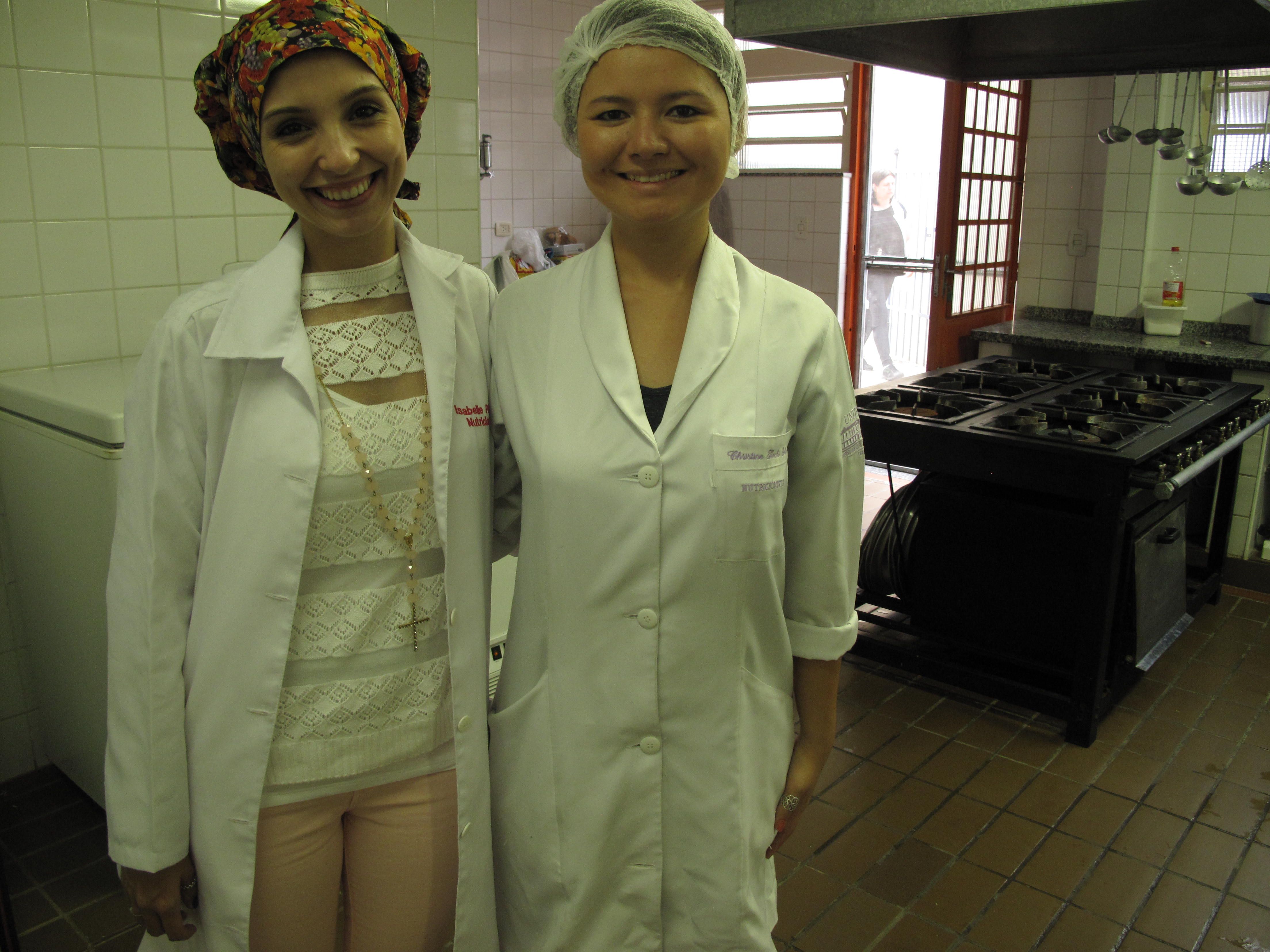Brazil’s school feeding program first started in 1954 to address child hunger and improve school attendance. “At the beginning it was about a matter of feeding kids to go to school,” says Eduardo Manyari, an international adviser to the National School Feeding Program. “Some of them were very hungry. Through this action, they attended school more often.”
Back then, the program was targeted to only the poorest parts of the country. In 2003, it was made a part of the national Zero Hunger Program to reduce hunger and ensure food security. At the time it was estimated that 44 million people, or 28 percent of the total population of Brazil, made less than $1 a day. But as the Zero Hunger Program brought down levels of poverty and hunger, overweight and obesity-related health problems began to rise.
In 2009, when the government enacted the School Feeding Law, mandating school meals to all students enrolled in public schools across the country, overweight and obesity were fast becoming a national issue. Today, an estimated one-third of Brazilian children between the ages of five and nine are overweight. That is why nutrition and nutritional education have become a central part of the school feeding program, says Albaneide Peixinho, who was the national coordinator for the school meal program for nearly 13 years. “Instead of just providing food because the population is hungry, the program is supposed to supply basic nutritional needs of the kids,” she says.
School meals are required to provide at least 30 percent of daily nutritional requirements in schools that offer two or more meals a day, 70 percent for kids enrolled in full-time basic education and at least 20 percent for those enrolled part-time. Fresh fruit and vegetables are a regular part of meals. Sodas and cookies are not allowed. And the levels of sugar and salt in each item on the menu have to be within nationally set limits.
“Right now, when we talk about nutrition, we’re teaching them good [eating] habits,” Manyari says.
This growing stress on the right kind of nutrition has made nutritionists key to this program. Every city or municipality hires a certain number of nutritionists depending on the number of students in public schools in their area.
“The nutritionist prepares the menu,” Peixinho says. The menu has to meet nutritional requirements. “Based on this menu, they decide what is going to be purchased by the school.” It is the nutritionists’ job to monitor the program and make sure each school abides by national standards.
“There are around 8,000 nutritionists working in the program now,” she says.
Nutritionist Christine Kojhi Golin, 29, works for the city of Sao Paulo, and her workday involves visits to a few schools every day. She supervises the preparation of the food in each school and monitors “the level of hygiene in the school kitchens, the stock of ingredients and how well the children accept the food.”
In almost every school I visited in the state of Sao Paulo and the city Brasilia, I watched kids eat their school meals with gusto. In each case, it was served hot, freshly cooked in the school kitchen. Staff in some schools confessed that kids have often refused to eat certain vegetables and fruits, especially the first time they are offered. This is a problem documented by studies as well. When it happens, school teachers, cooks and nutritionists work together to convince the kids otherwise. Sometimes it takes a cook telling the students how much love and hard work she had put into cooking the food. And sometimes it takes a teacher or nutritionist sharing meals with students.
If the students still don’t accept the food, then the nutritionist has to figure out a new recipe that might be more acceptable. If there are children with special needs, such as specific allergies, then she has to prepare a separate menu for them.
But a nutritionist’s duties don’t end there. In addition, “we also work with teachers and parents doing nutrition education activities,” says nutritionist Isabelle Pinheiro Dias da Cruz, 25, who often works with Golin. When teachers are aware of good food habits and nutrition, they can encourage their students to eat healthier—more fruits and vegetables and less junk food and sodas. Educating parents ensures that children eat healthier at home too.
It is too soon to say whether these efforts have had a measurable impact on the numbers of overweight and obese children in Brazil—there has been no national level study to prove this. But the meals have certainly improved in quality. “When I took office, I found that most schools were serving cookies and juices to students,” says Peixinho. This study shows that the school meals have gotten healthier and fresher in the past decade. Data collected by the Brazilian government shows that in 2004, 57 percent of school menus offered vegetables. By 2010, that went to 90 percent. And this presumably is having a positive impact on children’s health.
“I’m certain that the food we are giving to the children is of very good quality,” Golin says. And that makes her proud of her work, she adds.







